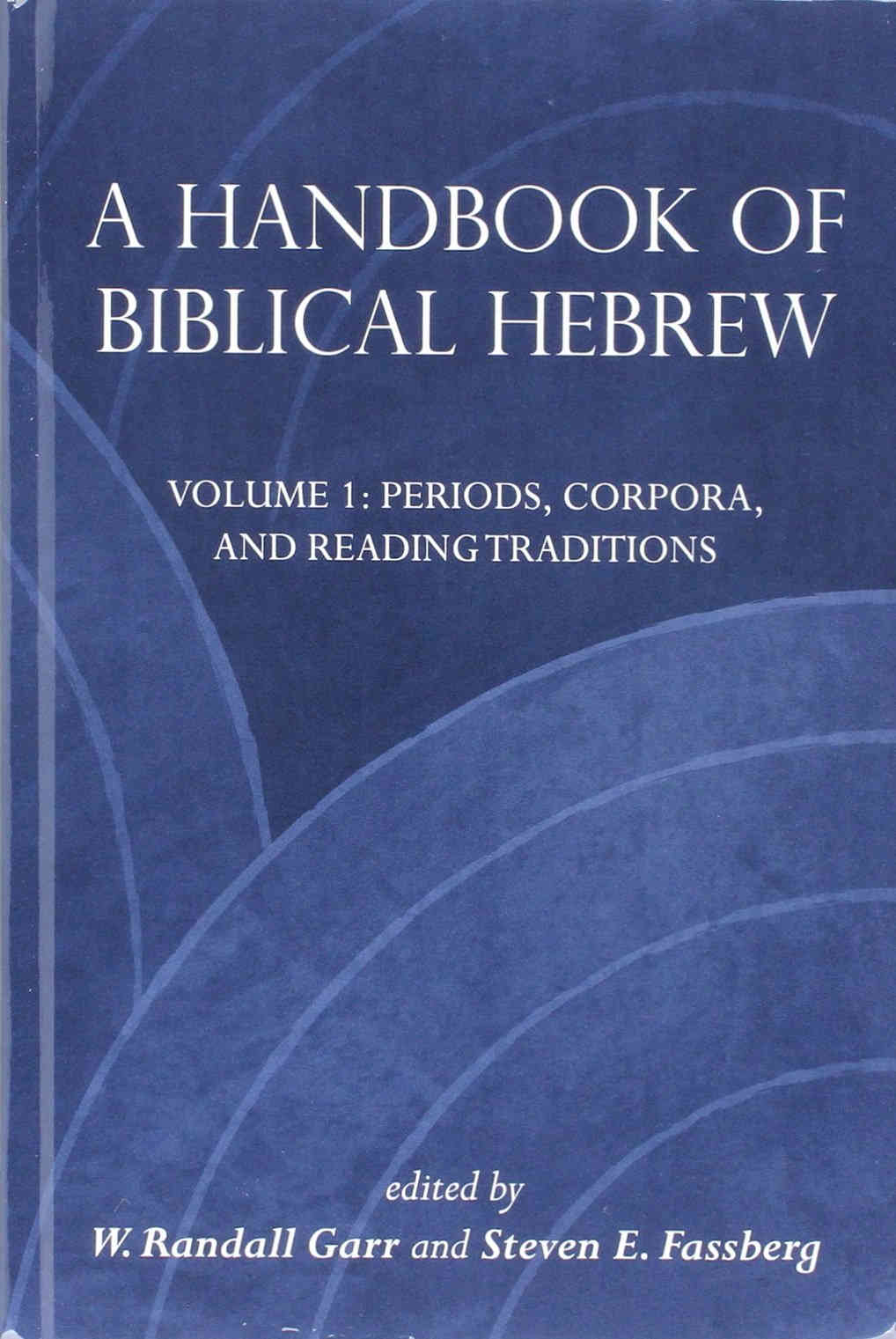Uma visão abrangente e sistemática dos diferentes períodos, fontes e tradições da língua hebraica bíblica.
GARR, W. R. ; FASSBERG, S. E. (eds.) A Handbook of Biblical Hebrew. Volume 1: Periods, Corpora, and Reading Traditions; Volume II: Selected Texts. Winona Lake, IN: Eisenbrauns, 2016, 370 p. – ISBN 978-1575063713.
Biblical Hebrew is studied worldwide by university students, seminarians, and the educated public. It is also studied, almost universally, through a single prism – that of the Tiberian Masoretic tradition, which is the best attested and most widely available tradition of Biblical Hebrew. Thanks in large part to its endorsement by Maimonides, it also became the most prestigious vocalization tradition in the Middle Ages. For most, Biblical Hebrew is synonymous with Tiberian Biblical Hebrew.
There are, however, other vocalization traditions. The Babylonian tradition was widespread among Jews around the close of the first millennium CE; the tenth-century Karaite scholar al-Qirqisani reports that the Babylonian pronunciation was in use in Babylonia, Iran, the Arabian peninsula, and Yemen. And despite the fact that Yemenite Jews continued using Babylonian manuscripts without interruption from generation to generation, European scholars learned of them only toward the middle of the nineteenth century. Decades later, manuscripts pointed with the Palestinian vocalization system were rediscovered in the Cairo Genizah. Thereafter came the discovery of manuscripts written according to the Tiberian-Palestinian system and, perhaps most importantly, the texts found in caves alongside the Dead Sea.
What is still lacking, however, is a comprehensive and systematic overview of the different periods, sources, and traditions of Biblical Hebrew. This handbook provides students and the public with easily accessible, reliable, and current information in English concerning the multi-faceted nature of Biblical Hebrew. Noted scholars in each of the various fields contributed their expertise. The result is the present two-volume work. The first contains an in-depth introduction to each tradition; and the second presents sample accompanying texts that exemplify the descriptions of the parallel introductory chapters.
Outra opção interessante:
SÁENZ-BADILLOS, A. Storia della lingua ebraica. Brescia: Paideia, 2007, 384 p. – ISBN 9788839407351.
Lembrando que:
O texto hebraico já está fixado no século II d.C. Nos séculos seguintes os escribas copiam novos rolos, procurando limitar os erros de transcrição ao mínimo. Para a compreensão correta do texto eles começam a fazer anotações nas margens, assinalar palavras duvidosas etc. No século V entram em ação os chamados massoretas. O termo vem do hebraico masar = “transmitir” e os massoretas são os “transmissores” do texto. Além de fazer anotações sobre o texto, estes sábios judeus sentem a necessidade de vocalizá-lo e acentuá-lo, para se obter um texto mais uniforme e fixo. Neste processo cada escola segue um método diferente, como a oriental, sediada na Mesopotâmia e a ocidental, na Palestina. Depois de muitas peripécias, prevalece a escola de Tiberíades (Palestina) aí pelo ano 900 d.C. E em Tiberíades as famílias Ben Neftali e Ben Asher. Desta última temos dois manuscritos importantíssimos: o manuscrito massorético mais antigo, Codex do Cairo, escrito e vocalizado por Moisés ben Asher, data do ano 895, mas só contém os profetas (anteriores e posteriores). O mais precioso é, porém, o Codex de Aleppo, quase completo, escrito e vocalizado por Aarão ben Moisés ben Asher, até 930. Pertencia à sinagoga de Aleppo e é salvo da destruição em 1948, sendo levado para Israel. Um terceiro manuscrito importante é o Codex de Leningrado, baseado nos manuscritos de Aarão ben Moisés ben Asher. Este contém todo o AT e é escrito em 1008. A melhor edição crítica que possuímos hoje – que é a Bíblia Hebraica Stuttgartensia – baseia-se principalmente neste manuscrito [nota 2 de Os essênios: a racionalização da solidariedade].
Leia Mais:
O Hebraico
Lista de manuscritos do AT disponíveis online

